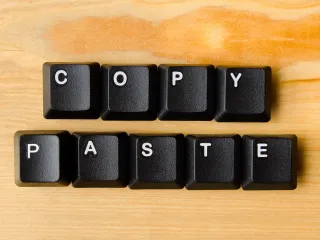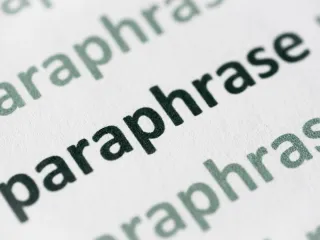Artificial intelligence, AI for short, is a booming industry. The global AI market is expected to reach $1,597.1 by 2030, with a compound annual growth rate of over 38% in the coming years. Artificial intelligence has been transforming many industries, such as healthcare, where it helps doctors identify disease patterns, streamline the experience, and improve patient care.
Recently, the topic of AI-generated content has been gaining steam with the introduction of ChatGPT. This powerful AI tool can write essays, compose poems, spit out novels, and even write computer programs with code.
Like spun content, AI technology can generate content that can pass many plagiarism detectors, such as Grammarly, without the writer doing any work. Various people have used ChatGPT and other AI tools to generate content.
Students use AI copywriting tools to write essays instead of submitting original work, and businesses and bloggers use it for their content marketing campaigns. However, is AI content plagiarism? Is it ethical to use these tools?
Some people mistakenly believe that AI writing tools can replace human content writers in the future. However, AI writing has significant pitfalls and risks, and relying on it instead of investing in human content writing can lead to significant consequences, whether you’re a student or a small business owner.
How Is AI Content Created?
AI content creation is usually quick and easy. You’ll start by creating an account with an artificial intelligence company offering AI technology that can write content from scratch. While ChatGPT is popular, various other AI copywriting tools exist, such as Jasper.ai.
These writing tools respond to specific prompts. For example, you can tell the content generator which post format you want to generate, such as a blog post, social media post, email newsletter, written essay, poem, musical lyrics, or even a computer program (in the case of ChatGPT-3).
You will also inform the copywriting tool which topics you want it to cover. For example, you can tell it to write about healthcare or a historical figure such as Benjamin Franklin. Depending on the tool, you can specify the tone of voice, whether professional and cold or emotional and heartfelt.
Then, the tool will spit out seemingly unique content. These tools use complex algorithms to create content. They analyze existing content, whether published on the web or generated by previous users and use paraphrasing and machine learning to come up with content that seems unique.
The goal of these tools is to generate content that seems human-written. The tool may use synonyms to ensure a diverse text, similar to how rewriting tools use synonyms to avoid plagiarism detection.
The result, however, needs to be quality content. While the quality of AI-generated content varies significantly from one tool to another, mistakes often creep in.
An AI writer is no match for a human writer, and it is common for AI-generated content to sound robotic and use awkward phrasing that makes it seem unnatural. While a plagiarism detector may not detect it, your professor or website visitors may notice something is off.
Besides, the market is reacting to the introduction of AI content writing tools. Various developers have created tools to detect AI content, using complex algorithms that differentiate between human and machine writing patterns.
AI Content and Plagiarism
Technically, AI-generated content is not plagiarism. Plagiarism, by definition, refers to copying other people’s content, whether you copy an article word for word or paraphrase it, to avoid detection.
Merriam-Webster defines plagiarism as taking someone else’s ideas or words and presenting them as one’s own. Since artificial intelligence tools generate unique content from scratch instead of stealing someone’s ideas, using an AI tool isn’t technically plagiarism, unlike copy-paste plagiarism.
However, that’s if the content creation tool creates the content from scratch using machine learning.
However, if the AI writer searches for existing content on the web and then uses paraphrasing to generate unique content when you run it through a plagiarism detector, so it doesn’t get flagged as duplicate content, that would be considered plagiarized content.
It can be challenging to know if a random AI tool generates content from scratch or paraphrases existing content without further research into how the tool works.
If the latter, you would be held responsible for the plagiarism, not the tool creators, as they simply provide a rewriting tool for you. When using information from any source, quoting when paraphrasing is essential. Thus, random AI writing tools carry an inherent risk of AI plagiarism.
It’s okay to cite sources and draw inspiration from other texts, but use these tips for adequately quoting any texts you paraphrase or cite to avoid accusations of plagiarism.
Is AI Content Ethical?
While artificial intelligence content creation might not fall under the technical definition of plagiarism, is it ethical? There is a strong argument that, no, it is not ethical. Many people consider AI writing unethical because you are presenting an idea or text as your own when, in fact, you used AI technology to create it. You are taking credit for a creation you did not create.
According to the Oxford Learner’s Dictionary, plagiarizing is “to copy another person’s ideas, words, or work and pretending that they are your own.” While an AI writer isn’t “another person,” and you’re not using a rewriting tool to rewrite an existing text, passing its work off as your own still comes dangerously close to plagiarism.
Using AI writing and falsely pretending the content is your own can cause you to get credit when you shouldn’t. You may pass your grade with your AI-generated essay, even if you know barely anything about the subject and haven’t put in any work. You can get content for your blogs without any original ideas.
AI-generated content goes against Google’s guidelines and is grounds for SEO penalties. Whether Google can detect AI content is debatable, although it is likely improving its algorithms to better differentiate between human and machine writing.
Ultimately, though, the ethics of using an AI tool depend on the case’s specifics and the purpose for which you use the content. If you use AI content on your blog and specify that it is AI content, you are at least informing your readers that the content is not your own.
However, if you pass AI content as your own, most people would not consider it ethical, regardless of the situation.
You should never use AI content to mislead or manipulate people; properly labeling it as AI content will help you avoid that. If you do that, you can use AI content to supplement your existing content marketing strategy. For example, you can use it to help you write sales copy for your emails when promoting a product.
If you are a student, be aware that most professors and institutions consider AI content on par with plagiarized content, they don’t tend to differentiate between the two.
Your professor may or may not use a tool to detect AI content. However, if they discover that you were using an AI tool to write your essays, it may be grounds for a penalty.
That penalty may automatically fail, depending on the institution and circumstances. Some institutions will consider it grounds for expulsion. You must carefully consider the consequences of using AI content creation tools before deciding whether it’s worth it.
There are other ethical problems with using AI content. Since AI tools use machine learning and large datasets to get information and create articles, those datasets may be biased in one direction or another.
Furthermore, AI content can create false news stories based on carefully selected information to support an argument and present misleading proof. As AI tools get more advanced, they can respond to prompts that tell them which stances to take on various issues.
Utilizing a Plagiarism Checker
Is AI content plagiarism? While AI content is not usually considered plagiarism in the technical sense of the word, that doesn’t mean that using an AI tool guarantees your content to be plagiarism-free even if it passes a plagiarism check. If the content is based on someone else’s work, and the tool used paraphrasing to avoid plagiarism detection, it is no different from copy-paste plagiarism.
When citing or paraphrasing articles, citing your sources properly is crucial to avoid plagiarized content. A tool like Quetext can help you properly use citation styles, such as MLA, APA, or Chicago, and correctly insert them into your text. This is to avoid accusations of duplicate content when rewriting or paraphrasing sources.
Using citations in your essays will also help you get a better score, demonstrating to your professor that you have excellent research capabilities.
If you want to create unique content, using plagiarism detection software like Quetext to ensure no plagiarism in your articles is best. Pricing can vary from one tool to another, but you can try Quetext’s online plagiarism checker for free.









